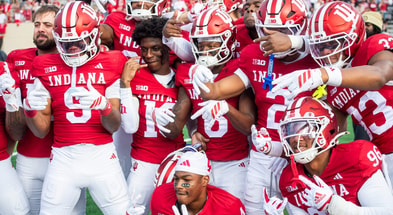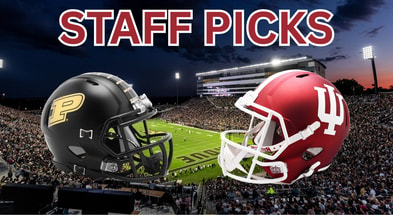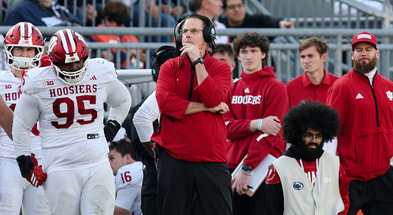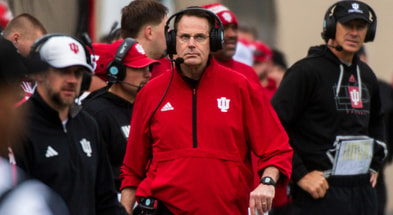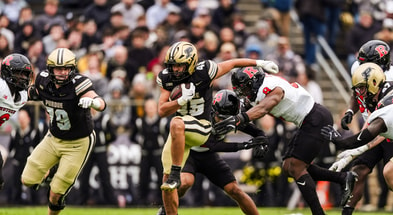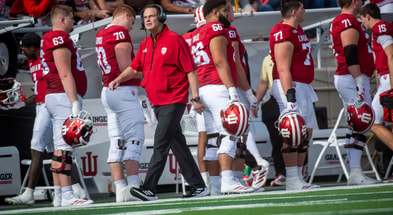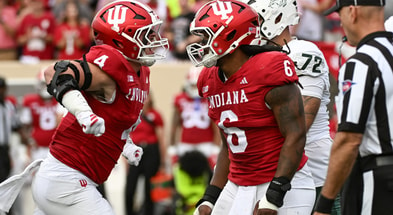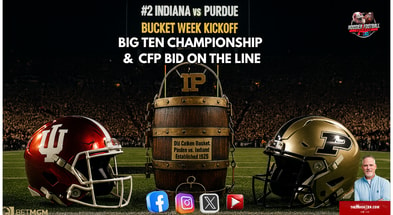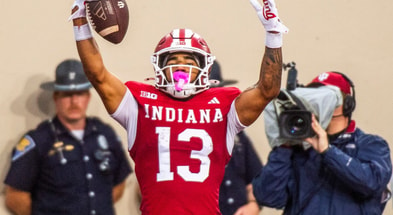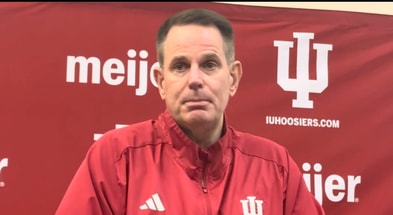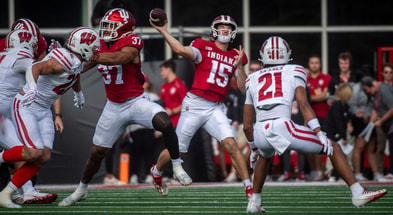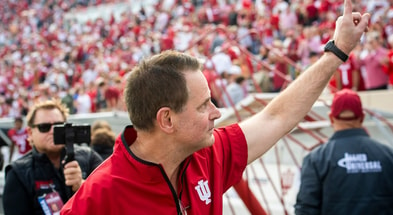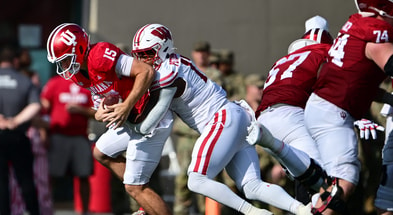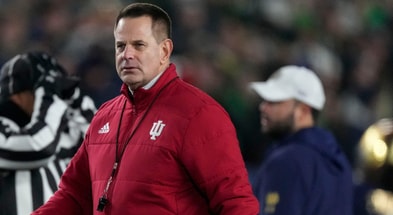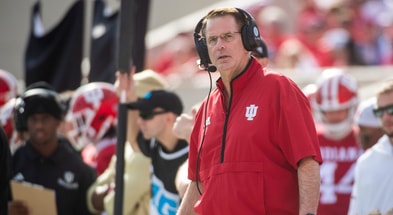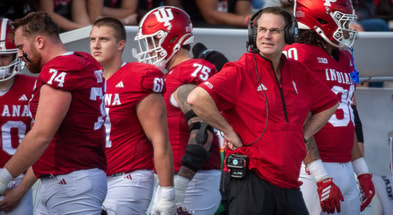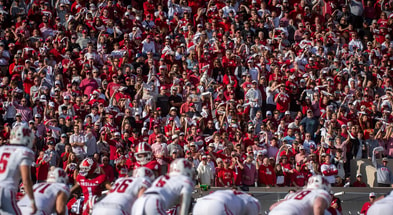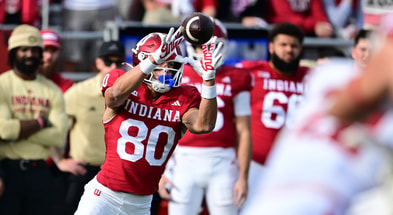Curt Cignetti calls for clarity amid college athletics chaos, stays neutral on CFP debate
Indiana head football coach Curt Cignetti is not prone to dramatic declarations or sweeping predictions. He is measured, thoughtful and — above all — pragmatic.
But as the college sports landscape continues to shift beneath the feet of coaches, athletes and administrators alike, Cignetti’s message is clear:
Enough with the chaos, it’s time for leadership.
“We need regulation, we need rules, so that we all can plan and do what we are hired to do,” Cignetti said at the annual Hoosiers Connect NIL event held at Huber’s Orchard & Winery. “’Cause right now there’s just a lot of uncertainty.”
MORE: Hoosiers at Huber’s Q&A: Curt Cignetti, Elijah Sarratt, Aiden Fisher talk Indiana football
Cignetti’s tone reflected a broader frustration shared across the industry, particularly among those responsible for building and managing football programs amid an unprecedented confluence of change — name, image and likeness, the transfer portal, and now the looming implications of the House v. NCAA settlement.
While many eyes are trained on the future of the College Football Playoff, Cignetti is laser-focused on what he sees as more pressing: stability and structure.
His comments came as the NCAA inches closer to finalizing the House v. NCAA settlement, a watershed legal agreement expected to usher in a new era of revenue sharing with athletes. Though landmark in scope, Cignetti isn’t convinced it will be a cure-all for the turbulence currently defining college athletics.
“There was a lot of front-loading of NIL deals, people trying to make transactions before the rev-share did pass because the NIL is going to go into effect immediately,” he said. “That created a bit of a different world and some anxiety — a little more anxiety than normal.”
It’s that atmosphere of uncertainty that keeps Cignetti up at night. It’s not just about money, it’s about the mechanics of roster management. The lack of consistent regulation around the transfer portal, in particular, has created significant challenges for coaching staffs trying to navigate unpredictable waters.
“If I just knew when the portal date would be, and what the portal pool would look like, I could figure out whether we are taking 20 or 17 high school guys,” Cignetti said, referencing Indiana’s 2026 signing class. “Right now it’s hard to plan because we can’t get any answers.”
ON3+: Three takeaways from Curt Cignetti’s comments at the Huber’s NIL event
That inability to forecast even the basic contours of a roster is emblematic of what many in the sport describe as a system in flux. A system with few rules, fewer answers and even fewer guarantees.
When the conversation turned to the evolving structure of the College Football Playoff — a topic currently consuming the SEC meetings in Destin, Florida — Cignetti stepped back from the fray.
Top 10
- 1Breaking
Egg Bowl fight
Ole Miss, MSU benches clear
- 2New
Jon Sumrall
New info on coach's future
- 3
Florida moving on
Out of Lane Kiffin running
- 4Trending
Egg Bowl theft
Lane Kiffin launches accusation
- 5
Alabama coordinator
Hired as new Oregon State HC
Get the Daily On3 Newsletter in your inbox every morning
By clicking "Subscribe to Newsletter", I agree to On3's Privacy Notice, Terms, and use of my personal information described therein.
While commissioners, athletic directors and coaches from powerhouse programs debate the ideal number of teams, automatic bids and seeding, Cignetti opted for a different approach.
“I’ve been part of all the different formats — D-II and FCS,” he said. “At the end of the day, there’s one team standing. Whether you start with 64 or eight, there’s going to be one standing at the end.
“No matter what the number is, somebody is going to feel bad that they got left out. That’s just the way it works. You can’t make everyone happy… If you pinned me down, I’d probably have an opinion, but it’s not worth stating.”
It’s a sentiment born of a career spent in virtually every corner of the sport. Cignetti has lived the reality of single-elimination brackets, regional seedings and playoff selection committees. His experience tells him that debates over format, while important, are ultimately secondary to the larger issues affecting the foundation of college football.
Still, he did tip his cap to one recent College Football Playoff change.
“The straight seeding is a good thing,” Cignetti said. “Would have been nice to have that last year and had a home game. … We were still in control of our own destiny and didn’t get the job done.”
For Cignetti, the real battle isn’t about whether the playoff should include 12 or 16 teams. It’s about ensuring that college football — and college athletics more broadly — retain a semblance of structure and fairness in an increasingly commercialized world.
At a time when many headlines focus on expansion, realignment and multi-million-dollar TV deals, Cignetti’s appeal is refreshingly grounded. He wants answers. He wants clarity. Most of all, he wants to get back to coaching football without wondering if the rules will change again the next time he goes to work.
He doesn’t deny that change is necessary — or even overdue. But like many of his peers, he’s searching for a roadmap.
“The game is great,” Cignetti said. “We’ve got to get the industry fixed.”
Not yet a member of TheHoosier? Take advantage of our launch with On3 and join our community! Just $1 for your FIRST MONTH and then 50% off the rest of your FIRST YEAR! Join here.
